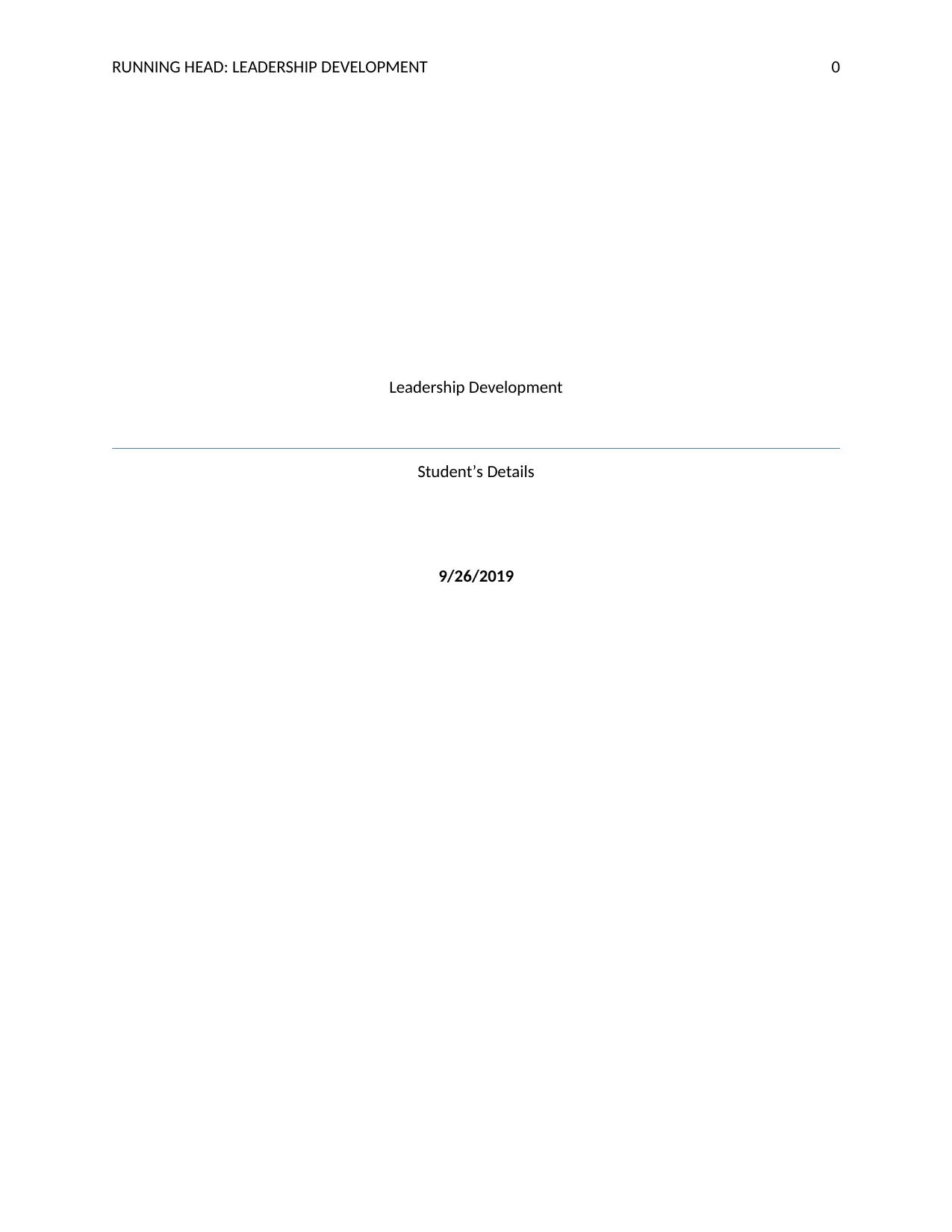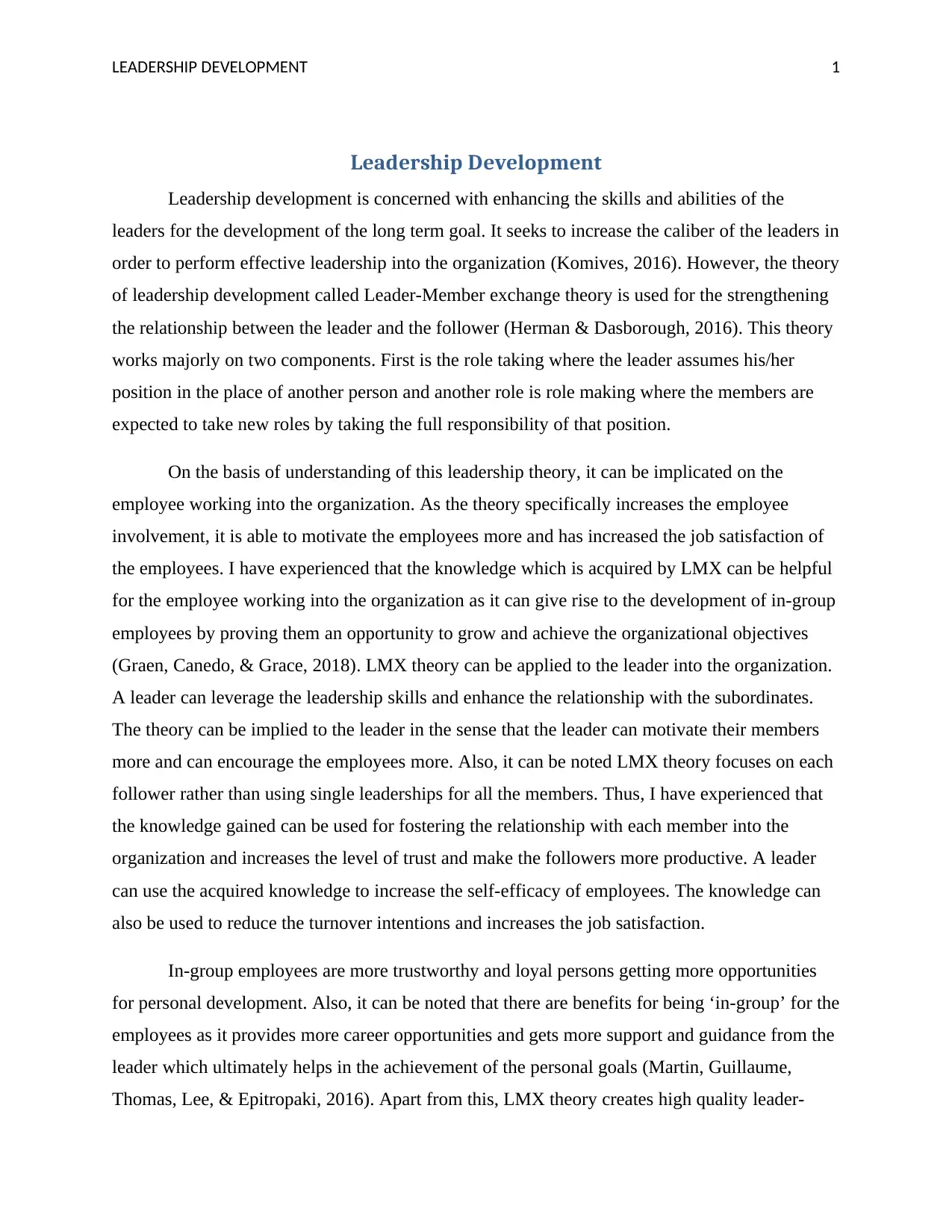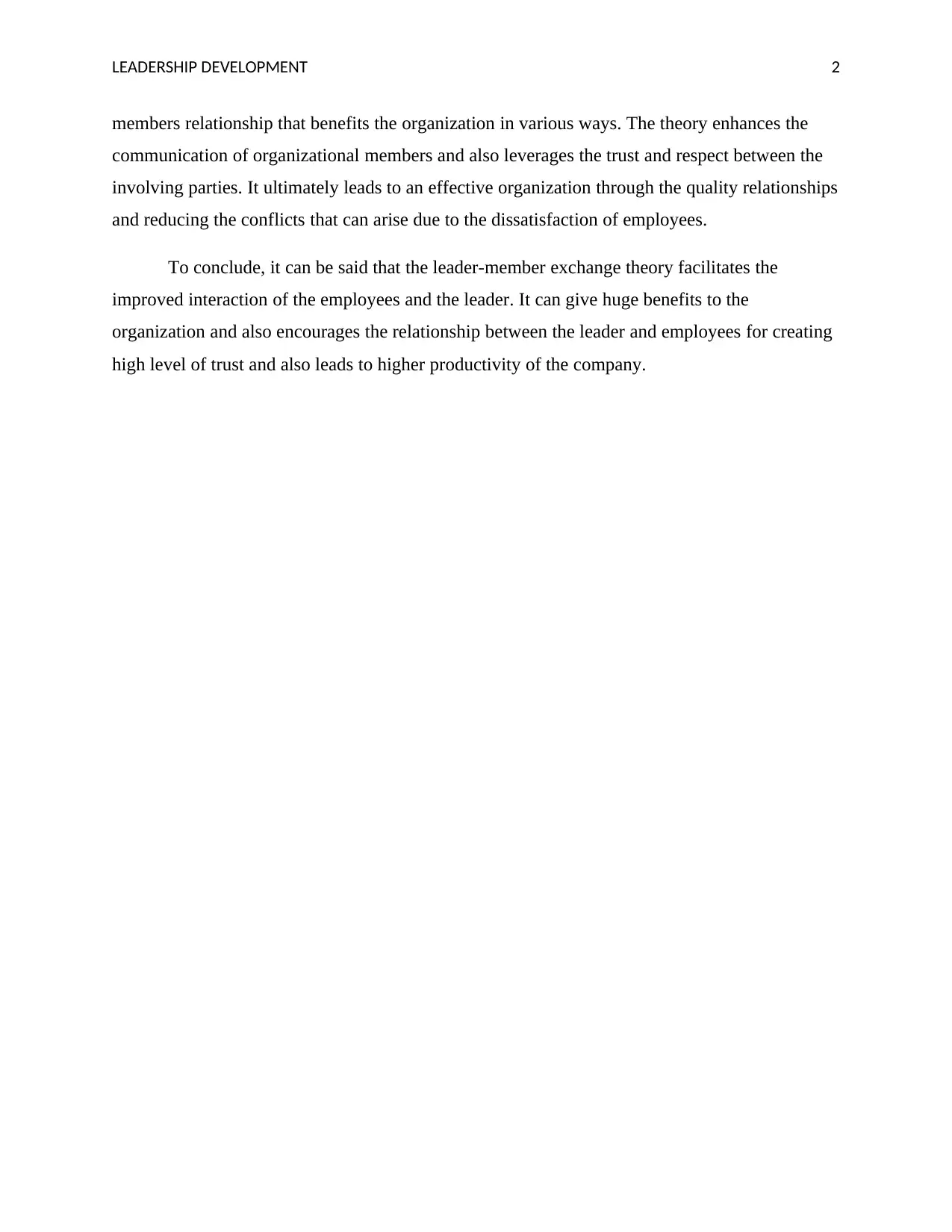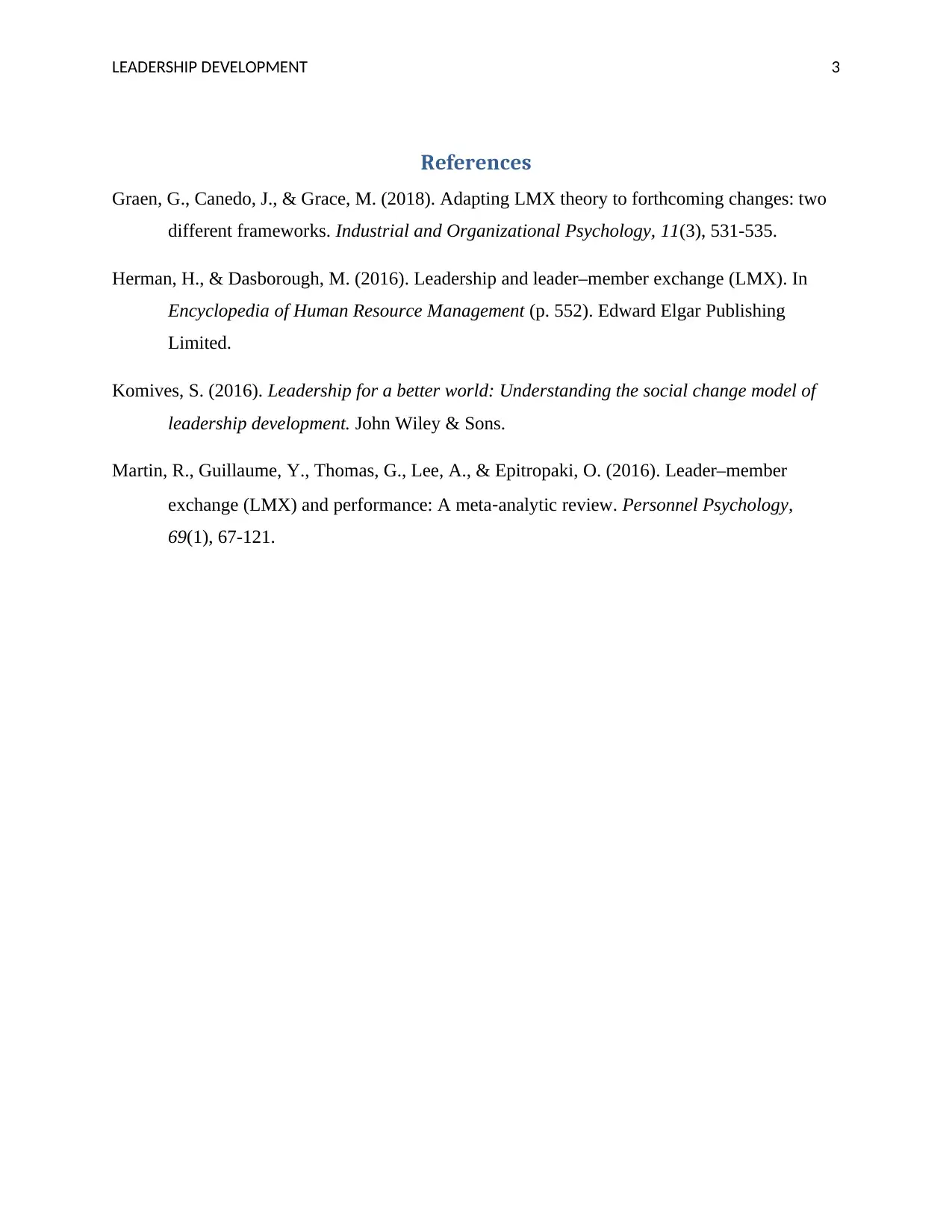Leadership Development: Exploring Leader-Member Exchange Theory
VerifiedAdded on 2022/10/15
|4
|734
|171
Essay
AI Summary
This essay delves into leadership development, focusing on the Leader-Member Exchange (LMX) theory. It examines how leaders build relationships with subordinates and how these relationships impact employee motivation, job satisfaction, and organizational performance. The essay discusses the practical implications of LMX theory, including the development of in-group employees, increased trust, and enhanced communication within organizations. It also explores how leaders can leverage LMX principles to foster employee self-efficacy, reduce turnover intentions, and create a more productive work environment. The analysis highlights the benefits of high-quality leader-member relationships, emphasizing the importance of trust, respect, and effective communication for achieving organizational goals. The author provides a personal perspective, reflecting on their experience and knowledge gained through the application of LMX theory, and how it can be used to improve interactions between employees and leaders, ultimately increasing productivity.
1 out of 4











![[object Object]](/_next/static/media/star-bottom.7253800d.svg)